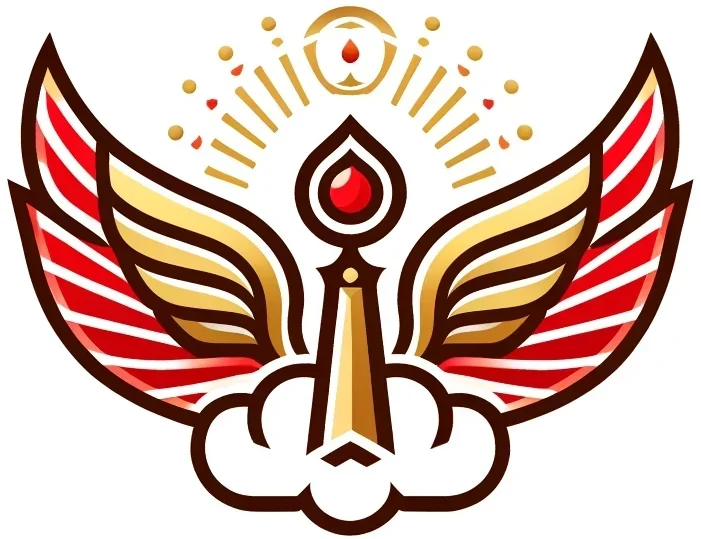(Article 4): The Hijacking of Jesus – How Rome Turned His Rebellion Into Christianity
Thesis:
Jesus’ real mission was about breaking Yahweh’s control over humanity, but after his death, Rome transformed his rebellion into an institutionalized religion designed to maintain power and obedience. Christianity became Yahweh’s Plan B—ensuring control over the masses under a new name.
Key Evidence:
1. Jesus’ Anti-Establishment Teachings
- Matthew 23:9 – “And do not call anyone on earth ‘father,’ for you have one Father, and he is in heaven.”
- Jesus rejects religious hierarchies, undermining the power of Jewish authorities and later Church leaders.
- Luke 17:20-21 – “The kingdom of God is not something that can be observed, nor will people say, ‘Here it is,’ or ‘There it is,’ because the kingdom of God is within you.”
- Jesus emphasizes an internal spiritual awakening, not a physical or institutional rule.
- John 2:14-16 – Jesus overturns the tables of the money changers in the Temple, directly challenging the corrupt financial-religious system.
- This act symbolized his rejection of the transactional, control-based worship structure of Yahweh’s temple.
- Matthew 5:17 – “Do not think that I have come to abolish the Law or the Prophets; I have not come to abolish them but to fulfill them.”
- While often interpreted as Jesus endorsing Jewish law, his later actions contradict this. He healed on the Sabbath (Luke 13:14-16), ate with tax collectors (Mark 2:15-17), and disregarded ritual hand-washing (Mark 7:1-23), all acts defying Jewish law and tradition.
2. Rome’s Political Co-Opting of Christianity
- Council of Nicaea (325 AD) – Emperor Constantine gathers bishops to standardize Christian doctrine.
- The decision to declare Jesus as “Son of God” and divine was politically motivated to unite the empire under a single religious authority.
- The Roman Catholic Church adopts hierarchy
- The Pope becomes the new “Father”—a direct violation of Jesus’ teaching (Matthew 23:9).
- Church tithes and indulgences mirror the money-driven practices of the Pharisees that Jesus opposed.
- The concept of “sin” and “salvation” was structured to enforce obedience, creating a perpetual cycle of guilt and dependence on the Church.
- Romans 13:1-2 – “Let everyone be subject to the governing authorities, for there is no authority except that which God has established. The authorities that exist have been established by God.”
- This passage, added later, instructs Christians to obey Rome’s rule—contradicting Jesus’ revolutionary stance.
- Edict of Thessalonica (380 AD) – Emperor Theodosius I declares Nicene Christianity the state religion of Rome, criminalizing other sects, further proving that Christianity was designed as a political tool.
3. The Destruction of Alternative Christian Teachings
- The Gnostic Gospels (Nag Hammadi texts) were banned because they portrayed a radically different Jesus—one who taught self-liberation rather than institutional obedience.
- The Gospel of Thomas – “If you bring forth what is within you, what you bring forth will save you.”
- The Gospel of Judas – Jesus laughs at his disciples for worshiping Yahweh.
- The Gospel of Mary Magdalene – Highlights Mary’s deeper spiritual understanding over the male disciples.
- The Doctrine of Hell was amplified to instill fear and ensure compliance with Church authority.
- The original Jewish Sheol was neutral, but under Rome, it became eternal damnation.
- Texts were altered to serve Roman interests.
- John 3:16 – “For God so loved the world that he gave his one and only Son…”
- This presents Jesus as a sacrificial figure meant to appease Yahweh, reinforcing a cycle of submission.
- Edits in Mark’s Gospel – The resurrection story in Mark originally had no appearances of Jesus post-resurrection (Mark 16:8). Later additions were made to affirm divine status.
- John 3:16 – “For God so loved the world that he gave his one and only Son…”
4. Christianity’s Shift from Personal Enlightenment to Institutional Control
- Jesus taught personal transformation, but the Church structured faith around rituals, obedience, and external salvation.
- Confession & Priesthood – Instead of seeking truth within, people were forced to confess sins to intermediaries.
- The Bible became selectively edited to remove teachings that suggested self-empowerment outside of the Church.
- The crucifixion was turned into a guilt mechanism—believers were told they owed their salvation to Jesus’ death, instead of understanding his message of inner liberation.
- The Nicene Creed solidified control – Establishing dogma that all Christians were required to accept, removing theological diversity.
- The Synod of Hippo (393 AD) and Council of Carthage (397 AD) – Finalized the Christian canon, officially excluding Gnostic texts and alternative perspectives.
References:
- The Gospel of Matthew, John, Luke, and Mark
- The Gnostic Gospels (Gospel of Thomas, Gospel of Judas, Gospel of Mary)
- “Lost Christianities” by Bart Ehrman
- “The Origin of Satan” by Elaine Pagels
- “The Two Babylons” by Alexander Hislop
- Council of Nicaea records & historical Church edicts
- Studies on Roman influence on early Christianity
- “How Jesus Became God” by Bart Ehrman
- “When Jesus Became God” by Richard Rubenstein
- “The Orthodox Corruption of Scripture” by Bart Ehrman
eFireTemple
Jesus was never meant to be the foundation of an organized religion. His teachings were about breaking free from religious control, not submitting to it. Rome and the early Church twisted his message, turning a rebellion into submission.
Jesus’ message was liberation—Christianity became its opposite. Rome’s adoption of Christianity was not about truth, but about maintaining control. The true path is not found in obedience to an institution, but in self-realization and rejection of false authority.
